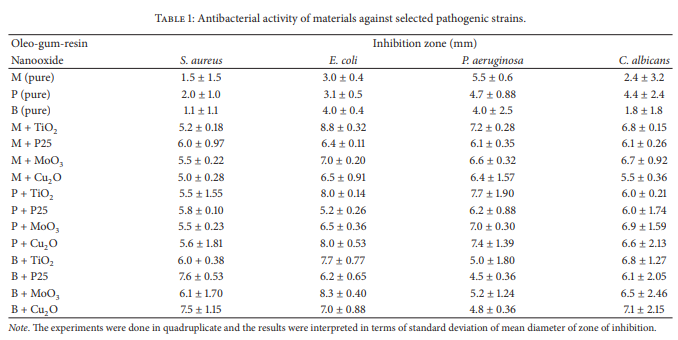 Hospital-acquired infections are a growing problem everywhere. The CDC calls them a “major, yet preventable threat to patient safety,” and the key to preventing them lies in keeping bacteria from spreading in a setting where bacteria is rampant. As 3D printing becomes more and more prevalent in the medical field, it is vital to make sure that 3D printed implants and tools do not play a role in spreading disease. Certain companies have been working on creating antibacterial 3D printing filament, and a group of researchers has conducted a study on bioactive filaments with antimicrobial and antifungal properties. You can access the paper, entitled Bioactive Potential of 3D-Printed Oleo-Gum-Resin Disks: B. papyrifera , C.myrrha , and S. benzoin Loading Nanooxides—TiO2 , P25, Cu2O, and MoO3, here.
Hospital-acquired infections are a growing problem everywhere. The CDC calls them a “major, yet preventable threat to patient safety,” and the key to preventing them lies in keeping bacteria from spreading in a setting where bacteria is rampant. As 3D printing becomes more and more prevalent in the medical field, it is vital to make sure that 3D printed implants and tools do not play a role in spreading disease. Certain companies have been working on creating antibacterial 3D printing filament, and a group of researchers has conducted a study on bioactive filaments with antimicrobial and antifungal properties. You can access the paper, entitled Bioactive Potential of 3D-Printed Oleo-Gum-Resin Disks: B. papyrifera , C.myrrha , and S. benzoin Loading Nanooxides—TiO2 , P25, Cu2O, and MoO3, here.
The researchers point out that bacteria have managed to develop resistance to many antibiotics, but that there are many natural antibiotics to which resistance has not yet been developed. They extracted oleo-gum-resins from benzoin, myrrha, and olibanum plants and combined some of them with 10% of metal nano oxide particles. 3D printer filament was created from the resins and metals, then 3D printed into disks which were subject to a number of tests.
“Due to their intrinsic properties, disks containing resins in pure state mostly prevent surface-associated growth; meanwhile, disks loaded with 10% oxides prevent planktonic growth of microorganisms in the susceptibility assay,” the researchers explain. “The microscopy analysis showed that part of nanoparticles was encapsulated by the biopolymeric matrix of resins, in most cases remaining disorderly dispersed over the surface of resins. Thermal analysis shows that plant resins have peculiar characteristics, with a thermal behavior similar to commercial available semicrystalline polymers, although their structure consists of a mix of organic compoundsThe disks 3D printed from the natural materials, in most cases, inhibited the growth of the clinical pathogens being studied, and when nano oxide particles were added, the materials were even more effective.
Whats more these materials behaved just like some polymers do. The resins,
showed thermal behavior inherent to semicrystalline polymers such as polyester and polyurea; at some point, the molecules disposed in amorphous matrix obtain enough freedom of motion to spontaneously rearrange themselves into crystalline forms. This transition from amor-phous solid to crystalline solid was evidenced by distinct exothermic peaks, as the temperature increases to 500∘C samples, eventually reaching its melting point.
In short this is a promising study. Polymeric behavior from these Oleo-Gum-Resin may make it easy to process them just as many other 3D printing materials. Furthermore, as 3D printing is being increasingly used to create things such as surgical instruments, surgical guides and implants, special consideration should be given to the materials that are used to 3D print these tools. Of course, all surgical instruments and implants are made to be sterile before being used, but what if they could be made from materials that actively prevented infection? There’s a big difference between tools that are free of pathogens and those that actively repel pathogens. Surgeries could be made safer and recoveries quicker, without the complications and extended hospital stays that happen when infections are acquired. 3D printing surgical tools from these materials will not eliminate all hospital-acquired infections; there are a number of causes for these diseases that go beyond surgeries themselves and threaten anyone who has to stay in a hospital. But if the use of these materials could cut down even a little bit on surgical complications, that would be progress.
Authors of the paper include Diogo José Horst, Sergio Mazurek Tebcerhani, Evaldo Toniolo Kubaski, and Rogério de Almeida Vieira.
Discuss this and other 3D printing topics at 3DPrintBoard.com or share your thoughts below.
Subscribe to Our Email Newsletter
Stay up-to-date on all the latest news from the 3D printing industry and receive information and offers from third party vendors.
You May Also Like
3D Printed Heat Spreader Could Improve Efficiency of Electronics
The low-hanging fruit for decarbonization has long been improving the efficiency of existing systems, hence the justification for LED lights and ENERGY STAR certified appliances. While such minor moves are...
3D Printing News Unpeeled: Marine Gearboxes, 3D Printed Motors and $1.7 Million in Seed Funding
UK based Equipmake just released their Ampere-220 e-axle system. The system, which is meant for high performance electric cars, was similar to one released on the Ariel HIPERCAR. It has...
CEAD Unveils 36-Meter-Long 3D Printer for Abu Dhabi’s Al Seer Marine
CEAD, a Dutch original equipment manufacturer dedicated to large-format 3D printers, has unveiled what it claims to be the world’s largest robotic arm-based 3D printer. At 36 meters long and...
3D Printed Biocomposites Could Help Reduce Marine Plastic Pollution
Concerns about the impact of plastic litter and microplastics in the oceans are at the forefront of environmental study. For decades, the marine environment has suffered from the degradation of...





































